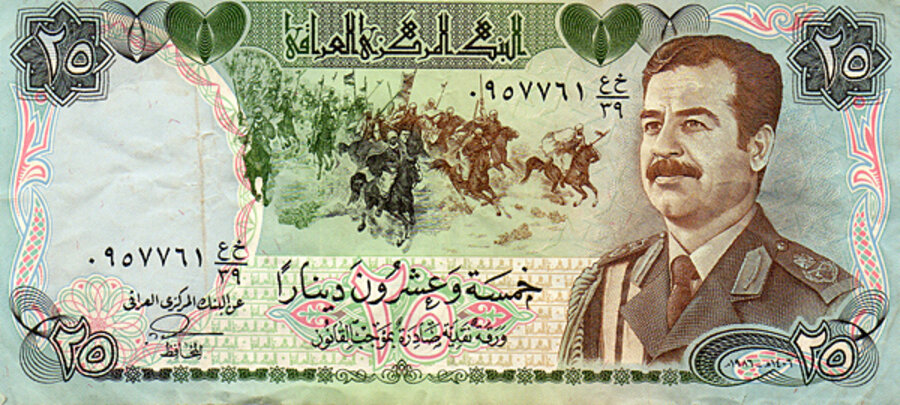Pictured: 25-dinar note, acquired in Baghdad in 2003
On the Saddam Hussein-era 25-dinar note, the Ba’ath Party emphasizes its ancient enmity with neighboring Persia by depicting Arab warriors defeating their Persian enemies in the Battle of Qadissyah. Mr. Hussein used Qadissyah as a thinly disguised metaphor for his hatred of modern Iran.
The deposed Iraqi president confessed under FBI interrogation in early 2004 that he did not want Iran to know his entire weapons of mass destruction program had been demobilized and destroyed. Hussein likely feared that even if the US warnings didn’t materialize into an actual invasion, his frontier would look weak to the Shiite leaders in Iran and they might take advantage.
The Iraqi provisional government issued a new Iraqi dinar between late 2003 and early 2004 as part of an effort to erase the imagery of Hussein from everyday life. Despite high hopes for an oil gushing, resurgent Iraq, the new, post-Saddam Iraqi dinar remains the extremely weak currency of a country locked in sectarian violence and ethnic tensions.







